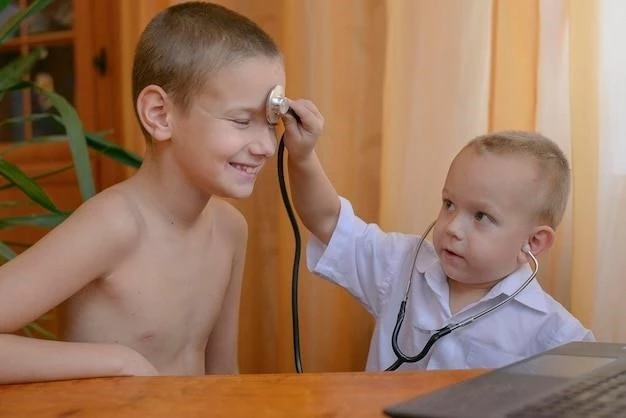Introduction
An uncommon neurocutaneous syndrome with congenital hypomelanotic and hypermelanotic cutaneous macules‚ spanning multiple generations in families.
Definition of Westerhof–Beemer–Cormane Syndrome
Westerhof-Beemer-Cormane Syndrome is a rare neurocutaneous syndrome characterized by hypo- and hypermelanotic cutaneous macules‚ retarded growth‚ and intellectual disability. It is known to span multiple generations in affected families.
Clinical Presentation
Characterized by congenital hypomelanotic and hypermelanotic cutaneous macules‚ and often accompanied by retarded growth and intellectual disability.
Characteristics of Congenital Hypomelanotic and Hypermelanotic Cutaneous Macules
Westerhof-Beemer-Cormane Syndrome presents with distinct hypo- and hypermelanotic cutaneous macules alongside potential manifestations of intellectual disability and growth retardation. These macules are observed in affected individuals across generations‚ highlighting the hereditary nature of the condition.
Association with Retarded Growth and Intellectual Disability
Individuals with Westerhof-Beemer-Cormane Syndrome often exhibit a combination of retarded growth and intellectual disability‚ which are significant components of the clinical presentation of this rare neurocutaneous syndrome.
Genetics
Westerhof-Beemer-Cormane Syndrome involves unknown modes of inheritance‚ highlighting the complex genetic nature of this rare neurocutaneous disorder.
Modes of Inheritance
The inheritance pattern of Westerhof–Beemer–Cormane Syndrome remains unknown‚ contributing to the complexity of the genetic basis of this rare neurocutaneous disorder.
Autosomal Dominant Inheritance
Westerhof–Beemer–Cormane Syndrome‚ also known as Hereditary Congenital Hypopigmented and Hyperpigmented Macules‚ displays traits that suggest autosomal dominant inheritance in certain cases‚ indicating a potential genetic pattern in the transmission of this rare neurocutaneous disorder.
Diagnosis
Distinctive features help differentiate Westerhof–Beemer–Cormane Syndrome from other conditions‚ aiding in accurate diagnosis and appropriate management.
Differential Diagnosis from Tuberous Sclerosis Complex
The differentiation of Westerhof–Beemer–Cormane Syndrome from Tuberous Sclerosis Complex is crucial due to distinct clinical presentations and manifestations observed in affected individuals.
Hereditary Congenital Hypopigmented and Hyperpigmented Macules
The characteristic appearance of congenital hypomelanotic and hypermelanotic cutaneous macules in the presentation of Westerhof–Beemer–Cormane Syndrome is indicative of an underlying genetic predisposition that manifests as distinct dermatological features in affected individuals.
Research and Studies
Reported cases in an Indian family and findings by W. Westerhof and colleagues contribute to advancing the understanding of Westerhof–Beemer–Cormane Syndrome.
Reported Cases in an Indian Family
Reported cases in an Indian family have shed light on the hereditary nature of Westerhof–Beemer–Cormane Syndrome‚ providing valuable insights into the clinical manifestations seen across generations.
Research conducted by W. Westerhof‚ F. A. Beemer‚ R. H. Cormane‚ and their team in 1978 revealed significant insights into Hereditary Congenital Hypopigmented and Hyperpigmented Macules‚ indicating a distinct neurocutaneous syndrome separate from other conditions like tuberous sclerosis complex.
Symptoms
Multiple hereditary congenital hypopigmented and hyperpigmented macules‚ along with features of retarded growth and mental deficiency‚ characterize Westerhof–Beemer–Cormane Syndrome.
Findings by W. Westerhof and Colleagues
In 1978‚ research by W. Westerhof and colleagues identified a unique neurocutaneous syndrome characterized by congenital hypopigmented and hyperpigmented macules with associated symptoms‚ distinguishing it from other related conditions.
Individuals with Westerhof–Beemer–Cormane Syndrome often present with symptoms of retarded growth and mental deficiency‚ which are key features of this rare neurocutaneous syndrome.

Management
Tailored treatment approaches are essential for Westerhof–Beemer–Cormane Syndrome to address symptoms effectively and provide necessary supportive care.
Multiple Hereditary Congenital Hypopigmented and Hyperpigmented Macules
Individuals with Westerhof–Beemer–Cormane Syndrome often present with a combination of multiple hereditary congenital hypopigmented and hyperpigmented macules‚ a distinct feature of this rare neurocutaneous disorder.
Supportive Care for Patients and Families
Patients and families affected by Westerhof–Beemer–Cormane Syndrome require comprehensive supportive care to address the spectrum of symptoms associated with this rare neurocutaneous disorder‚ ensuring optimal management and quality of life.
Prognosis
The outlook for individuals with Westerhof–Beemer–Cormane Syndrome varies‚ with potential complications and long-term effects requiring careful management and surveillance.
Retarded Growth and Mental Deficiency
Individuals with Westerhof–Beemer–Cormane Syndrome often exhibit symptoms of retarded growth and mental deficiency‚ highlighting key aspects of the condition’s clinical presentation.
Potential Complications and Long-Term Effects
Considering potential complications and long-term effects that may arise in individuals affected by Westerhof–Beemer–Cormane Syndrome is essential for providing appropriate care and managing the condition effectively over time.
Current Research
Recent studies and ongoing clinical trials are advancing the understanding of Westerhof-Beemer-Cormane Syndrome‚ providing insights into its complex nature.
Ongoing Studies and Clinical Trials
Continued research efforts and clinical trials are underway to advance the understanding of Westerhof–Beemer–Cormane Syndrome‚ with a focus on unraveling its intricacies and improving diagnostic and management strategies.
Advancements in Understanding the Syndrome
Research efforts have led to significant advancements in understanding Westerhof–Beemer–Cormane Syndrome‚ shedding light on its unique characteristics and underlying genetic components.

Support Resources
Patient assistance programs and community groups provide valuable support and information for individuals and families affected by Westerhof-Beemer-Cormane syndrome.
Patient Assistance Programs
Various patient assistance programs offer support to individuals affected by Westerhof–Beemer–Cormane Syndrome‚ providing resources to help manage the condition and access necessary treatments and services.
Community Groups and Support Organizations
Community groups and support organizations play a crucial role in offering assistance and guidance to individuals and families affected by Westerhof–Beemer–Cormane syndrome‚ providing a platform for sharing experiences and accessing valuable resources for managing the condition.
As research continues to advance the understanding of Westerhof–Beemer–Cormane Syndrome‚ including reported cases‚ genetic insights‚ and clinical manifestations‚ support resources play a vital role in assisting individuals and families affected by this rare neurocutaneous syndrome.
